National Museum of American History address
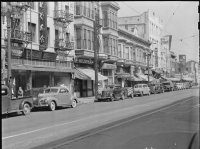 Our upcoming American History After Hours event on Wednesday, May 13, 2015, is all about the history of sushi in America, a story as much about cultural heritage as it is about culinary trends, traditions, and adaptations for the American palate. While we'll have chef Kaz Okochi of Kaz Sushi Bistro, Foodstory founder Yoko Isassi, and Bonny Wolf of American Food Roots to tell the full sushi story, here is a look at some of the big questions we'll be chewing over as we sample soy sauce, sake, and more.
Our upcoming American History After Hours event on Wednesday, May 13, 2015, is all about the history of sushi in America, a story as much about cultural heritage as it is about culinary trends, traditions, and adaptations for the American palate. While we'll have chef Kaz Okochi of Kaz Sushi Bistro, Foodstory founder Yoko Isassi, and Bonny Wolf of American Food Roots to tell the full sushi story, here is a look at some of the big questions we'll be chewing over as we sample soy sauce, sake, and more.
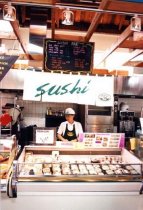 Where can you find the sushi capital of Japanese America?
Where can you find the sushi capital of Japanese America?
In downtown Los Angeles, the five-block-wide neighborhood known as "Little Tokyo" is home to America's largest Japanese population. (The other two "Little Tokyos" can be found in San Francisco and San Jose.) In 1905, this small area was home to about half of the city's 10, 000 Japanese, and remained a destination for newly arrived Japanese residents until the Oriental Exclusion Act of 1924. When the 30, 000 Japanese residents of Little Tokyo were removed to imprisonment camps during World War II (1942-1946), their vacant apartments became home to other Angelenos of various backgrounds, increasing the area population to more than 100, 000.
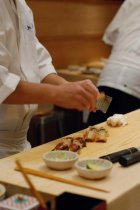 After the end of the war, many formerly imprisoned citizens of Little Tokyo relocated further into Los Angeles due to lack of housing, and over the following decades, Japanese-run businesses gained significant influence in the Los Angeles economy. It was in Little Tokyo that sushi made its first big splash, as the neighborhood's restaurants drew attention from Japanese businessmen and their American colleagues. Eating Japanese food in Little Tokyo has become a political statement for many of its residents, especially those who are fourth-or fifth-generation. While earlier generations may have grown up adapting their meals, traditional Japanese ingredients are now readily available to their grandchildren. Today, Little Tokyo is officially a historic district, and home to some of the most significant businesses and cultural centers in America.
After the end of the war, many formerly imprisoned citizens of Little Tokyo relocated further into Los Angeles due to lack of housing, and over the following decades, Japanese-run businesses gained significant influence in the Los Angeles economy. It was in Little Tokyo that sushi made its first big splash, as the neighborhood's restaurants drew attention from Japanese businessmen and their American colleagues. Eating Japanese food in Little Tokyo has become a political statement for many of its residents, especially those who are fourth-or fifth-generation. While earlier generations may have grown up adapting their meals, traditional Japanese ingredients are now readily available to their grandchildren. Today, Little Tokyo is officially a historic district, and home to some of the most significant businesses and cultural centers in America.
Without rice and fish, how did Japanese food traditions survive?
Japanese immigrants to America have been adapting their cuisine ever since they first arrived in Hawaii in the late 1880s—and sometimes under duress. In 1942, following the Japanese attack on Pearl Harbor, President Franklin D. Roosevelt signed Executive Order 9066, authorizing the round-up of 120, 000 Japanese-Americans to be relocated to 10 imprisonment camps—so-called "relocation centers"—across the West Coast and Great Plains.
You might also like



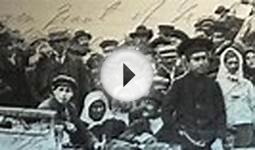
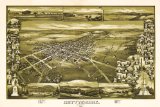
|
Gettysburg, 1888, Pennsylvania, Bird's-Eye View, Old Map Home ()
|
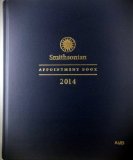
|
2014 Weekly/Monthly Smithsonian Appointment Book 7.5"x 9" Office Product (Bobley-Harmann Corporation)
|




